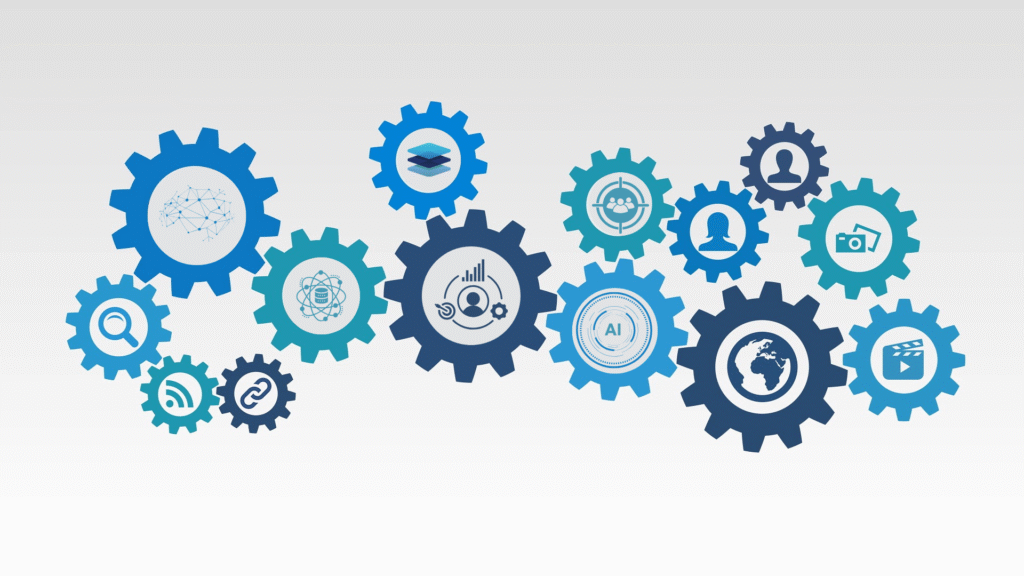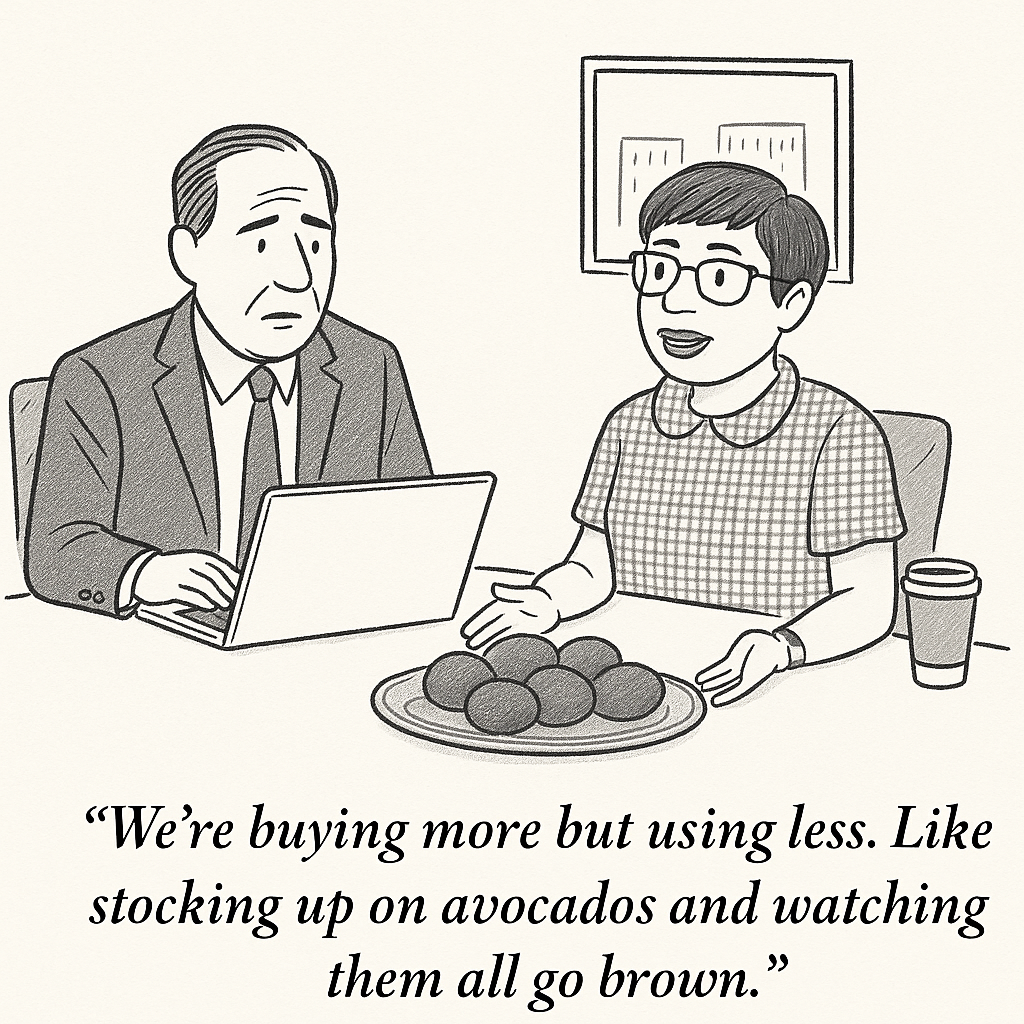Spoiler alert: You don’t need 11,000 tools to be a good marketer. You just need to know which ones make your boss think you’re a genius.

Welcome to the chaos and charisma of marketing technology in 2025. We’ve officially arrived at a place where global martech spend is hurtling past $215 billion by 2027 [3], where AI doesn’t just write your copy—it predicts your Q4 burnout, and where half your tech stack is a glorified garage sale of unused subscriptions.
This isn’t another “Top 10 Martech Trends” blog. This is your strategic survival guide—for CMOs, marketers, and those who pretend to understand their CRM.
Martech Madness: The Rise, the Spend, the Existential Crisis
Let’s start with the numbers—because in marketing, metrics are the new horoscopes.
With global martech spending crossing $670 billion in 2023 [20], and projections to exceed $215 billion annually by 2027 [3], it’s clear we’re not in Kansas anymore. From North America to India, brands are tossing their wallets at tech, hoping at least some of it sticks. In fact, Indian companies are setting benchmarks, with 95% planning to increase martech spending in the coming year [15].
Why the frenzy? Because in a fragmented, cookie-less, multi-device world, technology isn’t a nice-to-have. It’s the oxygen of modern marketing.
But here’s the catch: marketers, on average, only use 33% of their martech stack [19]. That’s a 25% drop from 2020.

So, what gives? Over-enthusiastic procurement, underwhelming onboarding, and the universal lie: “Our team will learn it on the go.”
AI: From Buzzword to Business Backbone
Once upon a time, AI in marketing meant a chatbot that could say “Hi.” Now, it’s the chief campaign planner.
94% of marketers already use AI for campaign optimization and content creation [1]. Generative AI tools like Jasper, Writer, and Adobe Firefly are helping teams create brand-safe, SEO-friendly content in seconds.
But it goes deeper. AI now:
- Predicts campaign outcomes with real-time simulations [1]
- Allocates budgets based on conversion trends [32]
- Personalizes content at scale
- Generates customer journeys in a matter of clicks
AI is no longer just a support tool—it’s a proactive, predictive, performance-enhancing partner. From sentiment analysis to churn prediction to performance forecasting, its role is embedded in the day-to-day, enabling real-time tweaks and last-minute campaign pivots that actually work.
And the results? Early adopters report 4-6% better business outcomes [20].
Even CRM platforms are leveling up. Today’s AI-powered CRMs can:
- Analyze sentiment
- Auto-create campaign drafts
- Suggest retargeting strategies
- Forecast customer churn [10]
AI has moved from buzzword to budget line—transforming from experimental to essential, with more than half of implementations already delivering measurable value [20].
TL;DR: If your martech doesn’t have AI, you may soon be outpaced by your intern’s Canva subscription and a well-fed ChatGPT.
Composability: Goodbye Mega Suites, Hello Lego Blocks
In the past, marketers bought bundled platforms promising to do everything—like the Swiss Army knife of digital. Today, they’re asking: Do I really need 19 blades if I only ever use one corkscrew?
Enter composable architecture. By 2026, 60% of CMOs will mandate composability in their martech procurement [1].
This approach allows marketers to:
- Choose best-in-class tools for each function
- Reduce vendor lock-in
- Lower cost bloat by paying only for what’s used
- Test and replace tools without overhauling the entire system
Composable stacks give teams room to experiment, test, swap out, and innovate—while remaining agile. This modular design principle reflects what modern businesses are increasingly demanding: control, agility, and performance.
Orchestration platforms like Segment, HubSpot, and Adobe Experience Platform have pivoted from being standalone stacks to connectors and enablers.
The goal? Freedom and flexibility.

First-Party Data: Because Cookies Are Crumbling
The cookie has crumbled. Literally.
As third-party cookies become obsolete, marketers are scrambling to collect first-party and zero-party data through their own experiences. CDPs (Customer Data Platforms) are now the MVPs, projected to hit $37 billion by 2027 [3].
Innovative brands are collecting this data via:
- Webinars with gated access
- Polls and Q&As during virtual events
- Surveys post-purchase or post-interaction [8]
The results? Smarter segmentation, better personalization, and campaigns that actually convert.
Smart brands are now offering value-exchange experiences—think early access to products or personalized recommendations—in return for a bit of user data. And it’s working.
Fun fact: 95% of B2B buyers are happy to share data if they see value [8]. Which means the problem isn’t the buyer—it’s your boring form.
Martech ROI: How to Justify the Spend Without Crying
You’ve got the tools. But are they paying rent?
Start with the basic ROI formula:
(Gain – Cost)/Cost) x 100 = ROI% [12]
Then apply it with brutal honesty. Consider total cost of ownership—not just the license fee. That includes training, onboarding, integration, and time spent Googling “Why isn’t this working?”
Marketing automation boasts one of the strongest ROIs: $5.44 for every $1 spent [4]. With 76% seeing returns within a year and 12% within a month, it’s a no-brainer—if implemented right.
A structured ROI review plan should be in place. Forecasted vs. actual value must be documented, updated, and used as the foundation for your next tech procurement meeting. It’s less about guesswork and more about discipline.
Stack Bloat: You’re Probably Paying for Stuff No One Uses
Look around. Do you know what that license fee for “Marketo-X Pro Enterprise Plus” is doing? Neither does anyone else.
Apply the Pareto Principle:
- Identify the 20% of tools delivering 80% of impact [19]
- Cut the rest
Audit every quarter. Remove tools that:
- No one logs into
- Don’t integrate
- Haven’t delivered KPIs in 6+ months
One tip? Ask your team which tools they actually use and why. You’ll be amazed how many tools were bought because “someone read about it in a newsletter.”
No More Silos: Media, Creative & Martech Need to Talk
If your media, creative, and tech teams are on different Slack channels, it’s already too late.
Cross-functional collaboration is the secret sauce. Yet most brands still treat these departments like rival factions in a reality TV show.
The reality? Martech success demands integration at a people level, not just a platform level [11].
Train your creative team on analytics. Loop in your media team during martech evaluations. Make your data analysts feel less like outsourced interns and more like the core strategic minds they are.
Co-located, co-decision-making teams with shared dashboards and clear KPIs are what separate “meh” marketing from award-winning campaigns.
Decision Frameworks for CMOs: Ask Before You Buy
Before you invest, ask:
- Does it simplify our stack or complicate it?
- Will this bring us closer to the customer?
- Are we solving a real problem or chasing a trend?
- How will we measure success—and who owns that metric?
Every tool should:
- Integrate with existing platforms
- Be used regularly by your team
- Be tied to measurable KPIs
- Pass a cost-vs-growth value check
And finally: Don’t buy tech for tech’s sake. Buy it to solve your most pressing bottlenecks.
What’s Next? AI-Powered Everything
2025 is the year martech finally grows up:
- Hyper-personalization becomes the default
- Real-time analytics guide every decision [5]
- CRM 3.0 leverages AI and real-time data to drive loyalty [14]
- Attention measurement tools track human-level engagement using facial coding AI [9]
This is not the future. This is your inbox by Tuesday.
Watch for continued convergence between CRM, commerce, and content. And keep an eye on tools that make customers feel seen—because marketing without human connection is just software.
Final Word: Less Tech, More Strategy
Martech in 2025 is like your skincare routine. The best results come not from having 19 products, but knowing which three work together.
Instead of chasing trends, build a strategy:
- Audit ruthlessly
- Collaborate deeply
- Invest smartly
- Measure everything
- Train constantly
Because the truth is, the tech isn’t what drives success.
You do.
And yes, sometimes with a little help from a chatbot who never sleeps.
Footnotes / Citations
- Top 5 Martech Trends of the Year,” Exchange4Media. Link
- “Key Marketing Technology Trends 2024,” LEK Consulting. Link
- “Martech Spend Set to Exceed $215 Billion by 2027,” Martech.org. Link
- “Marketing Automation Statistics 2024,” Digital Silk. Link
- “Martech Stack 2025: A Sneak Peek,” MartechEdge. Link
- “Why 2025 is the Year for Martech Optimization,” Martech.org. Link
- “Composable Martech Explained,” The Martech Summit Wiki. Link
- “First-Party Data Marketing Guide,” Kaltura Blog. Link
- “AI-Powered Attention Measurement,” RealEyes. Link
- “5 Ways CRMs Use AI in Marketing,” Martech.org. Link
- “Why Collaboration is the New Imperative,” Exchange4Media. Link
- “The Formula for Calculating Martech ROI,” Martech.org. Link
- “Cookieless Tracking Explained,” TechTarget. Link
- “CRM 3.0: Why It’s More Than a Buzzword,” The Marketing Blog UK. Link
- “Indian Brands’ Martech Spend Surges,” Exchange4Media. Link
- “Martech Investment Priorities,” Proof Analytics. Link
- “Martech as a $121.5 Billion Market,” Chiefmartec. Link
- “Marketing Automation Stats,” Backlinko. Link
- “Leveraging the 80/20 Rule for Martech ROI,” Martech.org. Link
- “Top Trends Impacting Martech in 2025,” Financial Express, Brandwagon. Link
- “Marketing Technology Trends & Innovations,” Improvado Blog. Link
- “Why Smart Marketers Should Front-Load Spending in 2025,” Martech.org. Link
- “Martech Statistics,” WebFX. Link
- “Marketing Automation Trends,” WebFX Blog. Link
- “2024 Marketing Statistics,” HubSpot. Link
- “Counterintuitive Composability Insights,” Chiefmartec. Link
- “Composable Martech: The 2025 Shift,” MartechVibe. Link
- “Martech’s Role in Modern Marketing,” SME Business Review. Link
- “Unlocking ROI Through Martech,” ContentStrategies.io. Link
- “Marketing Automation Industry Trends,” Blue Atlas Marketing. Link
- “Marketing Automation Stats 2024,” Cropink. Link
- “How AI Optimizes Marketing Budgets,” iSmartCom. Link
- “Personalization Questions for CMOs,” Bloomreach Blog. Link
- “Martech in 2025: Reality Check,” Martech.org. Link
- “How to Future-Proof Your Martech Stack,” Clevertouch. Link
- “Martech Predictions for 2025,” TechInformed. Link
- “Global Martech Spend Outlook,” Marketing Tech News. Link
- “Composability Truths in Martech,” Martech.org. Link
- “Building a Future-Ready Martech Stack,” Progress Blog. Link
- “Composable Martech Architecture,” Xerago. Link
- “CMO Insight: Martech ROI,” ModernB2B. Link
- “Marketing Data Analytics for Strategy,” Camphouse.io. Link
- “Building a Resilient Marketing Strategy,” LinkedIn Pulse. Link
- “Fixing Martech Misalignment,” Africa Talks Business. Link
